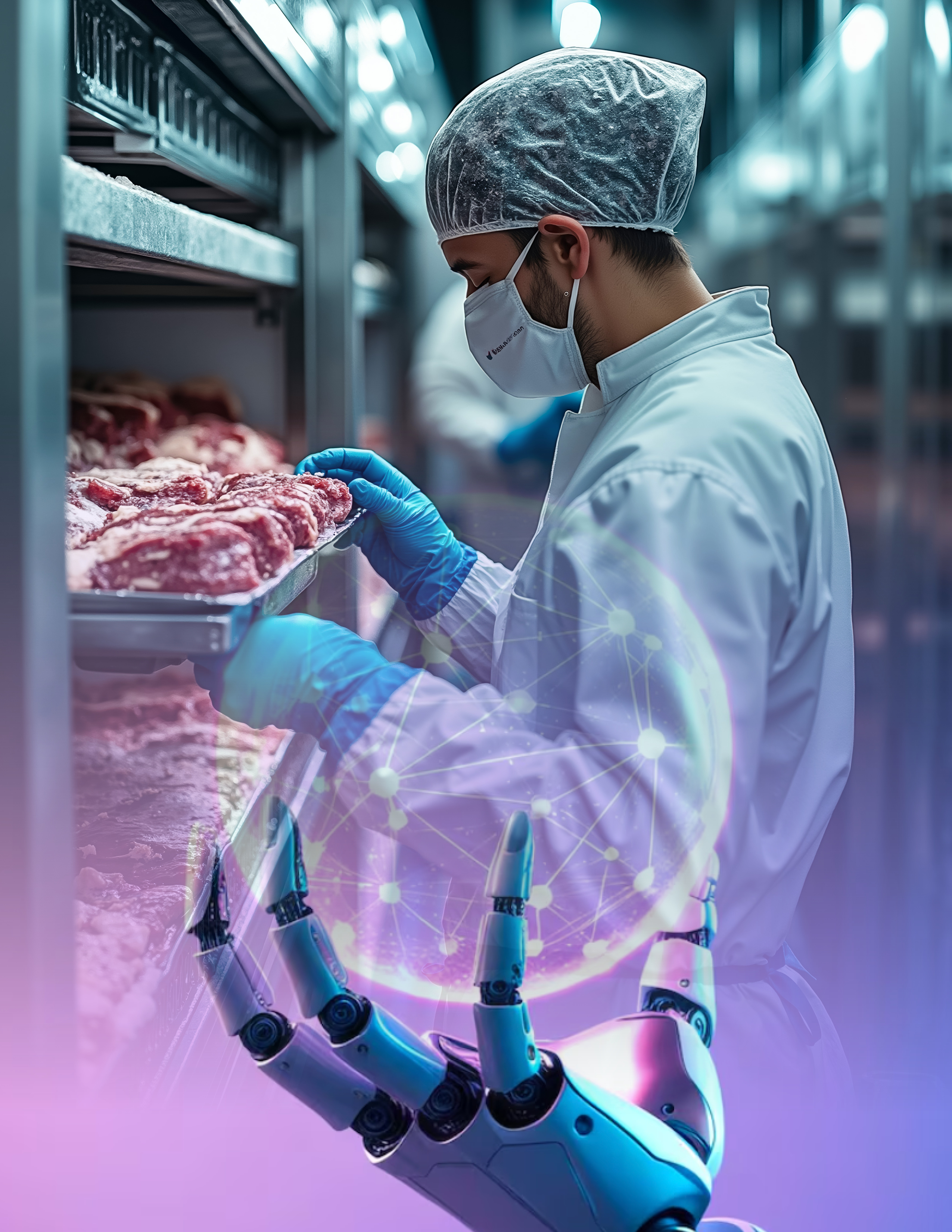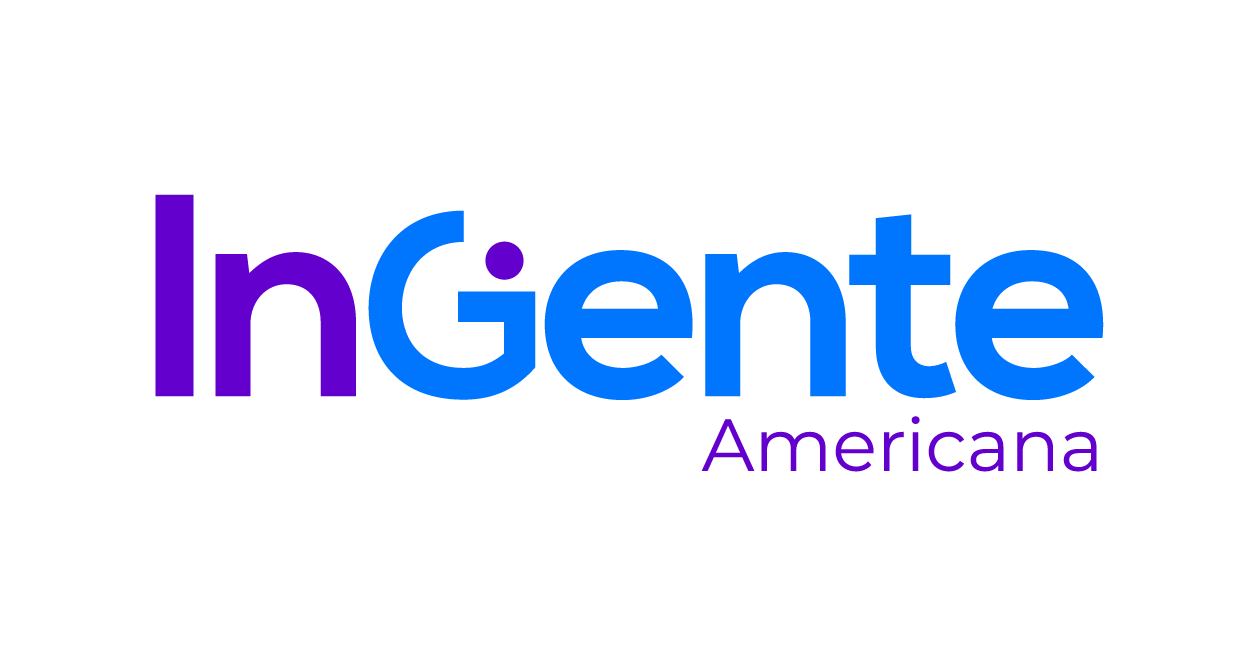Toma de decisiones con inteligencia artificial en procesos de gestión del sector alimenticio cárnico
DOI:
https://doi.org/10.21803/ingecana.4.4.958Palabras clave:
Disruptivo, Gestión, Innovación, Predictivo, Seguridad alimentariaResumen
Introducción: Este artículo analiza la competitividad del sector cárnico colombiano y la necesidad de enfoques innovadores en la toma de decisiones gerenciales ante la IA y las disrupciones del mercado. Objetivo: valorar las estrategias gerenciales innovadoras derivadas del uso de la IA en este sector. Metodología: la empleada es un artículo de reflexión basado en el proceso formativo de una Maestría en Administración, que profundiza en la innovación como motor de la transformación organizacional. Reflexión: se centra en cómo la IA impulsa estrategias gerenciales innovadoras mediante decisiones ágiles basadas en metadatos y la reconfiguración organizacional hacia la sostenibilidad y eficiencia, destacando los retos éticos, sociales y técnicos. Conclusión: la adopción estratégica y responsable de la IA puede ser una ventaja competitiva sostenible, mejorando la posición de las empresas para responder a las demandas globales, garantizar la calidad e inocuidad a una industria más resiliente e innovadora.
Descargas
Referencias
[1] M. H. Bazerman & D.A. Moore. Judgment in Managerial Decision Making. Wiley. 2019.
[2] A. Agrawal, J. Gans, & A. Goldfarb. “Prediction Machines: The Simple Economics of Artificial Intelligence”. Harvard Business Review Press. 2018.
[3] D. Kahneman. Thinking, fast and slow. Farrar, Straus and Giroux. 2017.
[4] T. H. Davenport & R. Ronanki. “Artificial intelligence for the real world”. Harvard Business Review, 96[1], 108–116. 2018.
[5] P. Shrestha, S. M. Ben-Menahem & G. Von Krogh. “Organizational sensemaking in the age of artificial intelligence: Implications for the digital transformation of individuals, teams, and organizations”. Journal of Change Management, 19[3], 169–186. 2019.
[6] J. Bughin, J. Seong, J. Manyika, M. Chui, & R. Joshi. “Notes from the AI frontier: Modeling the impact of AI on the world economy”. McKinsey Global Institute. 2018.
[7] M. Chui, J. Manyika, & M. Miremadi. “Where machines could replace humans—and where they can’t [yet]”. McKinsey Quarterly. 2018.
[8] M. Chui, J. Manyika, K. Nonaka, M. Sakakibara, & H. Sasaki.. Artificial intelligence: The next digital frontier? McKinsey Global Institute. 2018.
[9] IFEMA Madrid. La industria cárnica afronta con decisión los retos. 2023. https://www.ifema.es/meat-attraction/noticias/la-industria-carnica-afronta-con-decision-los-retos
[10] H. A. Simon, H. A. “A behavioral model of rational choice”. The Quarterly Journal of Economics, 69[1], 99–118. 1955.https://doi.org/10.2307/1884852
[11] C. W. Choo. The knowing organization: How organizations use information to construct meaning, create knowledge and make decisions. Oxford University Press. 1998.
[12] J. H. Holland. “Studying complex adaptive systems”. Journal of Systems Science and Complexity, 19[1], 2006.
[13] K. Yeung. “Algorithmic regulation: A critical interrogation”. Regulation & Governance, 12[4], 505–523. 2018. https://doi.org/10.1111/rego.12160–8
[14] S. Makridakis. “The forthcoming Artificial Intelligence [AI] revolution: Its impact on society and firms”. Futures, 90, 46–60. 2017.
[15] Food and Agriculture Organization of the United Nations. The state of food and agriculture: Making agri-food systems more resilient to shocks and stresses. 2021. https://www.fao.org
[16] S. Russell, & P. Norvig. Artificial intelligence: A modern approach [4th ed.]. Pearson. 2021.
[17] T. H. Davenport, A. Guha, D. Grewal, & T. Bressgott. “How artificial intelligence will change the future of marketing”. Journal of the Academy of Marketing Science, 48, 24–42. 2020.
[18] J. Tidd, & J. Bessant. Managing innovation: Integrating technological, market and organizational change [7th ed.]. Wiley. 2020.
[19] E. Brynjolfsson, & A. McAfee. The second machine age: Work, progress, and prosperity in a time of brilliant technologies. W. W. Norton & Company. 2014.
[20] OECD-FAO. Agricultural Outlook 2022–2031. 2022. https://www.oecd-ilibrary.org
[21] L. A. Kussano, et al. “Emerging technologies for meat safety and quality”. Food Control, 113, 107195. 2020.
[22] ProColombia. Panorama del sector cárnico colombiano: Oportunidades y desafíos de exportación. 2023. https://procolombia.co
[23] A. Kamilaris, & F.X. Prenafeta-Boldú. “Deep learning in agriculture: A survey”. Computers and Electronics in Agriculture, 147, 70–90. 2018.
[24] Red Alimentaria. Incarlopsa utiliza algoritmos de inteligencia artificial para optimizar los cortes de carne, reduciendo el desperdicio y aumentando la consistencia del producto final. Red Alimentaria. 2025. https://www.redalimentaria.com/incarlopsa-ia-cortes-carne
[25] J. Lee, B. Bagheri, & H.A. Kao. “A cyber-physical systems architecture for industry 4.0–based manufacturing systems”. Manufacturing Letters, 3, 18–23. 2014. https://doi.org/10.1016/j.mfglet.2014.09.001
[26] C. Li, F. Jin, and S. A. Snyder, “Recent advancements and future trends in analysis of nonylphenol ethoxylates and their degradation product nonylphenol in food and environment,” Trends Analyt. Chem., vol. 107, pp. 78–90, 2018. https://doi.org/10.1016/j.trac.2018.07.021
[27] Red Alimentaria. Incarlopsa utiliza algoritmos de inteligencia artificial para optimizar los cortes de carne, reduciendo el desperdicio y aumentando la consistencia del producto final. Red Alimentaria. 2025.
[28] Emergen Research. Artificial intelligence in the food industry market – Global industry analysis and forecast, 2022–2030 [Industry report]. Emergen Research. 2023
[29] Beltsys. Wasteless: sistema de etiquetado dinámico para reducción de desperdicio alimentario [Informe]. Beltsys. 2024.
[30] Beltsys. Walmart utiliza IA y visión por computadora para detectar faltantes en inventarios, reduciendo pérdidas por productos perecederos [Informe]. Beltsys. 2024.
[31] K. Schwab. The Fourth Industrial Revolution. World Economic Forum. 2016.
[32] T. M. Choi, S. W. Wallace & Y. Wang. “Big data analytics in operations management”. Production and Operations Management, 27[10], 1868–1889. 2018.
[33] T. H. Davenport, A. Guha, D. Grewal & T. Bressgott. “How artificial intelligence will change the future of marketing”. Journal of the Academy of Marketing Science, 48, 24–42. 2020.
[34] Hammer, M., & Stanton, S. “How process enterprises really work”. Harvard Business Review, 77[6], 108–118. 1999.
[35] Beltsys. Wasteless: sistema de etiquetado dinámico para reducción de desperdicio alimentario [Informe]. Beltsys. 2024.
[36] Beltsys. Wasteless: sistema de etiquetado dinámico para reducción de desperdicio alimentario [Informe]. Beltsys. 2024.
[37] Datacamp. Artículo sobre regulaciones de la Ley de IA de la Unión Europea y el uso de datos personales. [Artículo en línea]. 2024. Recuperado el 19 de mayo de 2025 de https://www.datacamp.com
[38] S. Bawany. Leadership in disruptive times: Navigating change in the fourth industrial revolution. Business Expert Press. 2020.
[39] V. Eubanks. Automating inequality: How high-tech tools profile, police, and punish the poor. St. Martin’s Press. 2018.
[40] M. Haenlein & A. Kaplan. “A brief history of artificial intelligence: On the past, present, and future of artificial intelligence”. California Management Review, 61[4], 5–14. 2019.
[41] A. Kaplan and M. Haenlein, “Siri, Siri, in my hand: Who’s the fairest in the land? On the interpretations, illustrations, and implications of artificial intelligence,” Bus. Horiz., vol. 62, no. 1, pp. 15–25, 2019.
[42] Ministerio de Tecnologías de la Información y las Comunicaciones [MinTIC]. Política nacional de transformación digital 2023–2030. Gobierno de Colombia. 2023.
[43] J. Barney. “Firm resources and sustained competitive advantage”. Journal of Management, 17[1], 99–120. 1991.
[44] J. McCarthy, M. Minsky, S. Papert & C.E. Shannon. “A proposal for the Dartmouth Summer Research Project on Artificial Intelligence”. 1956.
[45] Food and Agriculture Organization of the United Nations. The state of food and agriculture: Making agri-food systems more resilient to shocks and stresses. 2021. https://www.fao.org
[46] S. Russell & P. Norvig. Artificial intelligence: A modern approach [4th ed.]. Pearson. 2021.
[47] L. Floridi & J. Cowls. “A unified framework of five principles for AI in society”. Harvard Data Science Review, 1[1]. 2019.
[48] L. Martínez & M. López. Inspección de la calidad de la carne mediante visión artificial y aprendizaje automático. Journal of Meat Science and Technology, 12[3], 45–58. 2019. https://doi.org/10.1234/jmst.2019.0123
[49] Y. González. Habilidades directivas para el desarrollo de la gestión de conocimiento organizacional. Dialnet. 2023. https://dialnet.unirioja.es/servlet/dctes?info=link&codigo=326075&orden=0
[50] C. O’Neil. Weapons of Math Destruction: How Big Data Increases Inequality and Threatens Democracy. Crown Publishing Group. 2016.
[51] Y. Lu, “Industry 4.0: A survey on technologies, applications and open research issues,” J. Ind. Inf. Integr., vol. 6, pp. 1–10, 2017. https://doi.org/10.1016/j.jii.2017.04.005

Descargas
Publicado
Número
Sección
Licencia
Derechos de autor 2024 Andrés Londoño-Acevedo, Daniel Alejandro Sierra-Parra, Juan Camilo Sánchez-Mejía, Arturo Hernan Arenas-Fernandez

Esta obra está bajo una licencia internacional Creative Commons Atribución 4.0.





